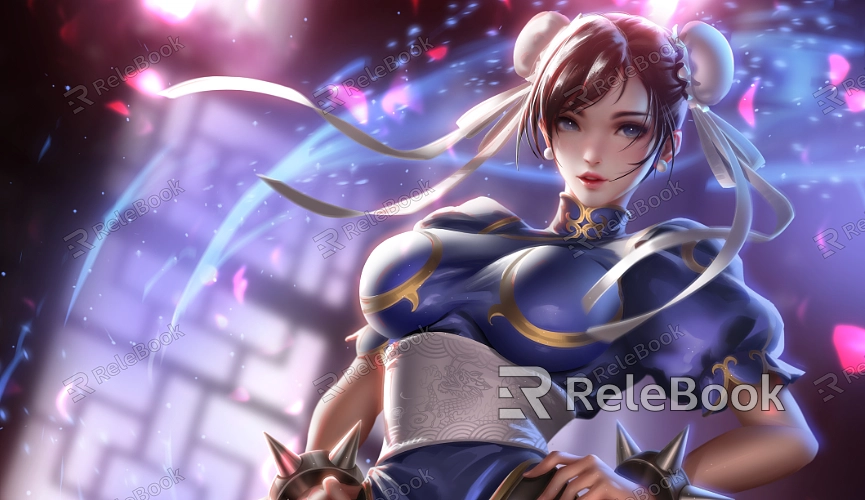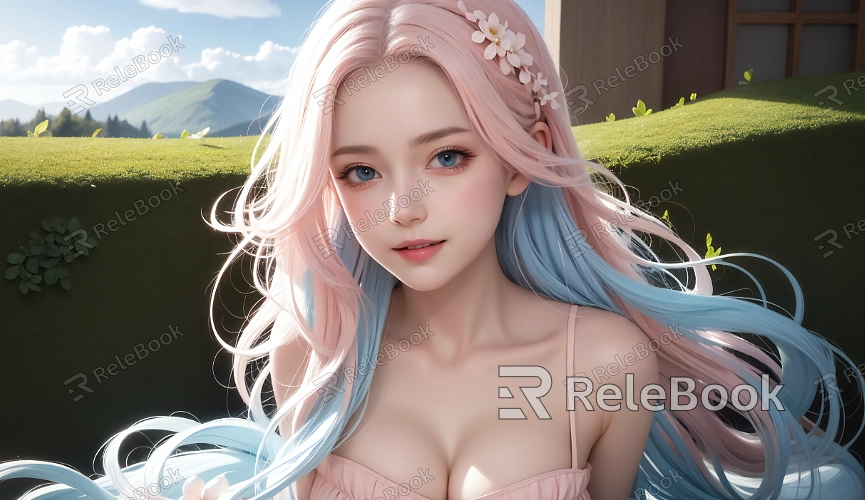How to Do Textures for 3D Game
In 3D game development, the surface details of characters, environments, and props largely depend on the textures applied to them. Textures not only provide color, gloss, and surface details, but they also play a crucial role in enhancing visual effects and immersion. Whether you're working on character modeling, scene design, or prop creation, the right textures can significantly elevate the quality of the project. Commonly used 3D software such as Blender, 3ds Max, and Maya all offer powerful tools for texture creation and application. This article will explore how to create textures for 3D games, introducing key techniques and methods.

1. Choose the Right Type of Texture
Different game projects require different types of textures, so it’s essential to choose the right one based on the needs of the project. Common types of textures include base textures, normal maps, roughness maps, and reflection maps.
Base Texture
Base textures provide color, detail, and surface characteristics for models. These can include things like character skin, clothing, building walls, and ground textures such as grass. When designing base textures, it's important to consider the material's properties, such as wood, stone, metal, or fabric.
Normal Maps
Normal maps simulate surface detail, like bumps and grooves, without adding extra geometry. By adjusting the direction of surface normals, normal maps give objects realistic lighting effects, creating the illusion of depth.
Roughness and Reflection Maps
Roughness maps control the surface’s glossiness and detail, simulating how light interacts with different materials. Reflection maps are used to simulate mirror-like reflections, such as those found on metal surfaces or water.
2. Use High-Quality Texture Resources
When creating textures for games, using high-quality texture resources can save time and significantly improve the game's visual appeal. Many websites and platforms offer extensive texture libraries, allowing designers to find resources that suit the project’s needs.
Online Texture Libraries
Platforms like Texture Haven, Polyhaven, and Relebook provide both free and paid texture resources. These platforms offer textures for various materials, from common surfaces like floors and walls to specialized textures for metal, glass, and more. Designers can quickly download and apply them.
Custom Textures
In addition to using pre-made textures, designers can also create custom textures by painting or adjusting them as needed. Tools like Substance Painter allow designers to paint directly onto 3D models, while Photoshop can be used to tweak images and create unique effects.
3. Create Textures for Different Materials
Different materials require different techniques when it comes to texture creation. Depending on the material type, textures need to account for properties like reflection, refraction, transparency, and roughness.
Metal Textures
Metal surfaces are typically highly reflective, so it’s important to focus on reflection maps and roughness maps. Designers can control the glossiness of metals by adjusting roughness, and use specular highlights and reflections to define details.
Organic Textures
Textures for organic materials, such as skin, fabric, or wood, require fine detail. Designers can use high-resolution maps and detail textures to simulate things like skin pores, wrinkles, and textures found in natural materials, or manually paint them for a more organic look.
Transparent Materials and Glass
For transparent materials like glass, liquids, or water surfaces, textures must account for transparency, reflection, and refraction effects. In 3D software, designers can use refraction and reflection maps to simulate the optical properties of these materials.

4. UV Unwrapping and Texture Mapping
Accurate texture application relies heavily on UV unwrapping. UV unwrapping is the process of "flattening" a 3D model's surface into a 2D plane, which makes it easier to apply textures accurately. Proper UV mapping ensures seamless texture application, preventing stretching or distortion.
UV Unwrapping Techniques
In software like Blender or 3ds Max, designers can use automatic or manual UV unwrapping tools. For complex models, manually adjusting UV seams, optimizing splits, and fixing seams can help prevent noticeable stretching or mismatched textures.
Seamless Texture Stitching
Seamless texture stitching is key to high-quality texture creation. Designers need to pay attention to how textures tile across UV layouts, ensuring that there are no unnatural seams or color mismatches.
5. Use Proper Rendering Settings
The effect of textures isn’t only dependent on the textures themselves, but also on the rendering settings. Different lighting conditions and render engines can impact the final look of textures, so it’s essential to adjust settings based on the specific project.
Lighting and Reflection
During rendering, designers need to adjust lighting, reflections, and shadow parameters to ensure textures look natural under various lighting conditions. For instance, using HDR lighting maps can simulate complex environmental lighting, adding realism to scenes.
Render Engine Selection
Different rendering engines, such as V-Ray, Cycles, or Unreal Engine, can affect how textures are rendered. Designers should select the appropriate render engine based on project requirements, and adjust materials and texture settings according to the engine's capabilities.
Creating textures for 3D games is a multi-faceted process that involves various skills, from choosing the right texture types and using high-quality resources to carefully unwrapping UVs and adjusting rendering settings. Mastering these techniques will help designers create more immersive and realistic game scenes and characters. Hopefully, this article has provided useful insights into the texture creation process and can help you improve your design skills.
If you're looking for high-quality 3D texture resources, SketchUp models, or 3ds Max models to create detailed models and virtual environments, Relebook offers a wealth of options that can help bring your project’s visuals to the next level.

